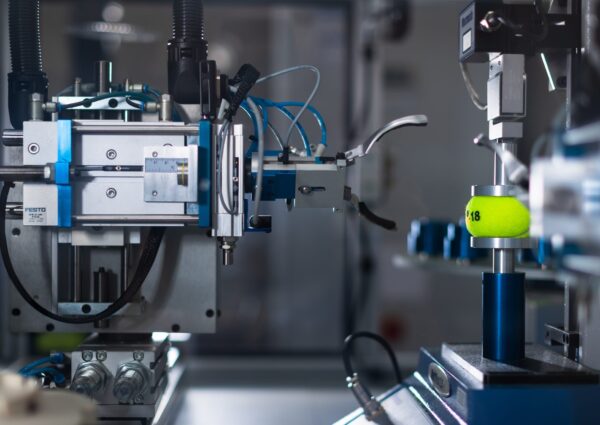SDMTS Works With Local Manufacturers to Create Safe, Efficient Practices During Covid-19
Businesses of all sizes and across industries have had to make changes in response to Covid-19. Manufacturers, many of which have been deemed essential, face their own set of stressors and challenges when it comes to these adaptations.
South Dakota Manufacturing & Technology Solutions (SDMTS) exists to support manufacturers across the state, and of course, its tactics have had to shift as well. Time that would have been spent in manufacturers’ facilities, getting to know their teams, has transitioned to Zoom and telephone.
“As this was developing in late February and early March, we decided that what we need to do is help manufacturers stay open,” said Keith Deibert, an SDMTS business advisor. “Most are considered critical infrastructure, and their workers are expected to show up unless they or a relative had a proven case.”
How is SDMTS supporting manufacturers?
The advisors at SDMTS consulted with manufacturers on a variety of topics, including the availability of the Paycheck Protection Program, the CARES Act, and proper cleaning methods and procedures to safeguard employees.
Beginning in early April, SDMTS started hosting Manufacturing Collaboration Calls via Zoom every Friday morning, where representatives from different manufacturers could learn more about relevant topics including SBA funding, crisis communication tactics, temperature checks and childcare solutions. The SDMTS team brought in subject matter experts to the calls, and they’ve made these and other resources available online.
Now, Deibert says they’re shifting to a peer-to-peer model during these calls, allowing manufacturers to share their experiences with one another.
“We tried to do things like webinars, but we found out that the information changes so fast that we couldn’t keep up with it,” he said. “We had to adapt as quickly as we could.”
Deibert says the calls have routinely brought in around 75 people, representing close to 50 different manufacturers.
“When we see the volume dropping off, we know it’s time to move on to the next method or topic,” he said.
Manufacturers adjust practices to maintain a safe environment
While manufacturers face a range of issues from staffing, to securing funding, to managing the demand and transportation of goods, the health and safety of their workers is paramount.
“The number one concern for these companies is the health of their employees,” Deibert said. “That’s a very positive aspect to South Dakota and the culture here.”
Because many manufacturing companies are considered essential infrastructure, the option to close down for the health of their employees wasn’t always available. Instead, they had to quickly implement new health and safety procedures.
“Everyone’s taking temperatures, everyone’s wearing masks, and some have brought in thermal scanning technology,” Deibert said.
Thermal scanning systems are available in a range of capabilities and price points, from handheld scanners to systems that can measure temperature from a distance of four feet. Some thermal imagers are able to register a new person every second, increasing efficiency for large companies, and others are able to log the data, making it simple to monitor and trace cases.
“The other thing they’re going to have to get better at is monitoring who worked where, and alongside whom,” Deibert said. “We’ll see the technology developing there, and employees’ attitudes may start to shift from being uncomfortable with the monitoring to appreciating it.”
Moving forward, Deibert says manufacturers will also have to become more flexible with schedules and illnesses. In an industry where many processes are synchronized and reliant on a strict schedule, employers have had to adapt and find ways to become more flexible.
“Lots of people think manufacturing companies can run without people in close proximity to each other, and some can, but some can’t,” Deibert said. “It’s not true in every plant, but many are sequenced and it’s a lot more difficult to take people out and create a gap. It may slow them down, or even shut them down .”
He predicts that companies will begin cross training employees to allow for more coverage and multi-tasking across areas that were previously specialized.
As the situation progresses and companies work to implement creative solutions, SDMTS will continue to be a resource for the state’s manufacturing companies.
“We’re looking forward to getting back in the facilities, and we hope to be actively working with clients soon,” Deibert said.
Visit South Dakota Manufacturing & Technology Solutions’ website for more Covid-19 resources, or to request a consultation.
This piece was originally published on the Start Up Sioux Falls website.





